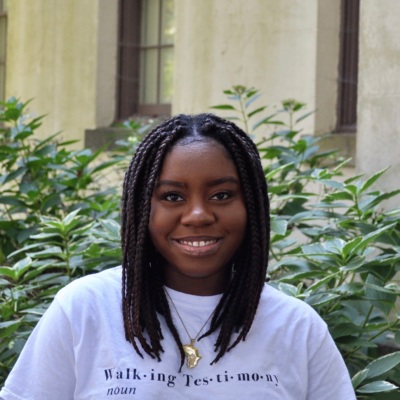Are We Listening? Youth Mental Health Challenges are Rooted in Community Violence
By Deanie Anyangwe
4 min read.
“[M]urder rate go up—murder rate go down—like I said. But there’s always killing.”
-Young Adult Focus Group Participant, Behind the Asterisk*, 2019
For many young people in the United States, community violence is an unfortunate part of daily life. Also called neighborhood violence, community violence is an interpersonal form of violence between individuals not involved in familial or intimate relationships. It includes incidents such as shootings, stabbings, and other aggravated assaults; is often carried out by young people; and frequently occurs in public settings. These situations happen when complex environmental factors like poverty, structural racism, systemic disinvestment, and easy access to alcohol, drugs, and weapons coincide.
“I was stabbed six times with a screwdriver, and the second time I was stabbed six times in the night. So that makes me who I am now. I never trust anybody to be behind me. I always watch my back.”
-Young Adult Focus Group Participant, Behind the Asterisk*, 2019
Community violence is a traumatic stressor that has damaging effects on young people’s mental, social, psychological, physical and economic well-being. Young people exposed to violence are at risk for poor long-term behavioral and mental health outcomes, such as depression, anxiety, and aggressive behaviors. In instances where young people are chronically exposed to community violence, they may also demonstrate symptoms of post-traumatic stress disorder, regardless of whether they are victims, direct witnesses, or hear about the crime. Evidence also shows that people who were exposed to gun violence fatalities experienced higher levels of depression and suicidal ideation than those who were not exposed.
Community violence also creates barriers to developing healthy relationships with peers and community members. Young people are less likely to use public spaces such as parks due to safety concerns. Youth exposure to community violence is associated with poor academic performance, educational outcomes, labor force participation, and earnings into adulthood. Exposure to community violence and the ripple effects of trauma and grief place enormous strain on children and youth, families, schools, employers, hospitals, government systems, and entire communities.
Gun violence overwhelmingly harms people in communities that have been economically marginalized. Neighborhoods with high levels of violence routinely face multiple compounding challenges arising from and exacerbated by structural inequity and racist policies such as segregation; limited availability of or access to quality jobs; a lack of safe and affordable housing; a lack of affordable, quality physical and mental health services; and histories of divestment. Moreover, significant research on the interactions of place and violence, along with a robust body of evidence, demonstrates the connection between state-sponsored racial segregation and rates of violence today.
“But, you know, and then on the other hand, you have these communities where people feel that we need to shoot each other, you know? You got gangs being the only support that people have. You got all these bad and bad influences, mental health problems, mass shootings. You don’t know. People are, they’re not getting support like on all fronts.”
-Young Adult Focus Group Participant, 2023
While some young people embrace guns, this is largely due to a collective failure to keep our young people safe using non-carceral, community-centered, effective community safety strategies. Many young people that carry guns don’t intend to commit crimes but feel the weapons are necessary to protect their own physical safety. They often have guns to protect their own physical safety and largely do not convey any intent to use these weapons to proactively commit crimes.
Black youth are 14 percent of young people ages 14-24 in the U.S., but account for nearly 48 percent of all gun-related deaths among all young people in this age group. Yet Black youth continue to be targeted as the cause for the rising violence in America. Policymakers in states such as Maryland and Georgia and cities including Washington, D.C., New York City, and Philadelphia are pathologizing Black youth to justify anti-Black, tough on crime policies, despite the vast evidence that these policies are both destructive and ineffective. This bipartisan effort to criminalize Black youth subjects them to state-sanctioned violence as punishment for structural problems that they did not create. And while the overall number of homicides committed by youth rose slightly in recent years along with national trends, current youth arrest rates are the lowest that they have been in the last 40 years.
Successful non-carceral CVI strategies that have led to decreases in community violence in cities across the country include non-police street outreach and violence interruption, and hospital-based violence intervention programs. Policymakers examine these strategies, and embrace a structural analysis to understand the reasons that cause young people to own guns, and invest in communities to enable them to lead this work. Policymakers must adopt a more nuanced understanding of the roles systemic divestment, place-based disadvantage, anti-Black racism, racial capitalism, mass criminalization and other critical factors have in driving community violence. Lastly, policymakers should ground proposed interventions in knowledge of how interlocking systems of violence manifest to create the circumstances that lead to community violence in order to effectively address the problem and keep our young people safe.
Behind every act of community violence there are families, friends, and communities left to grapple with the aftermath of trauma, injury, and/or loss of life. Interventions that address community violence support youth mental health. Our young people have been clear on what they need. It is now on us to do our part to keep them safe.
